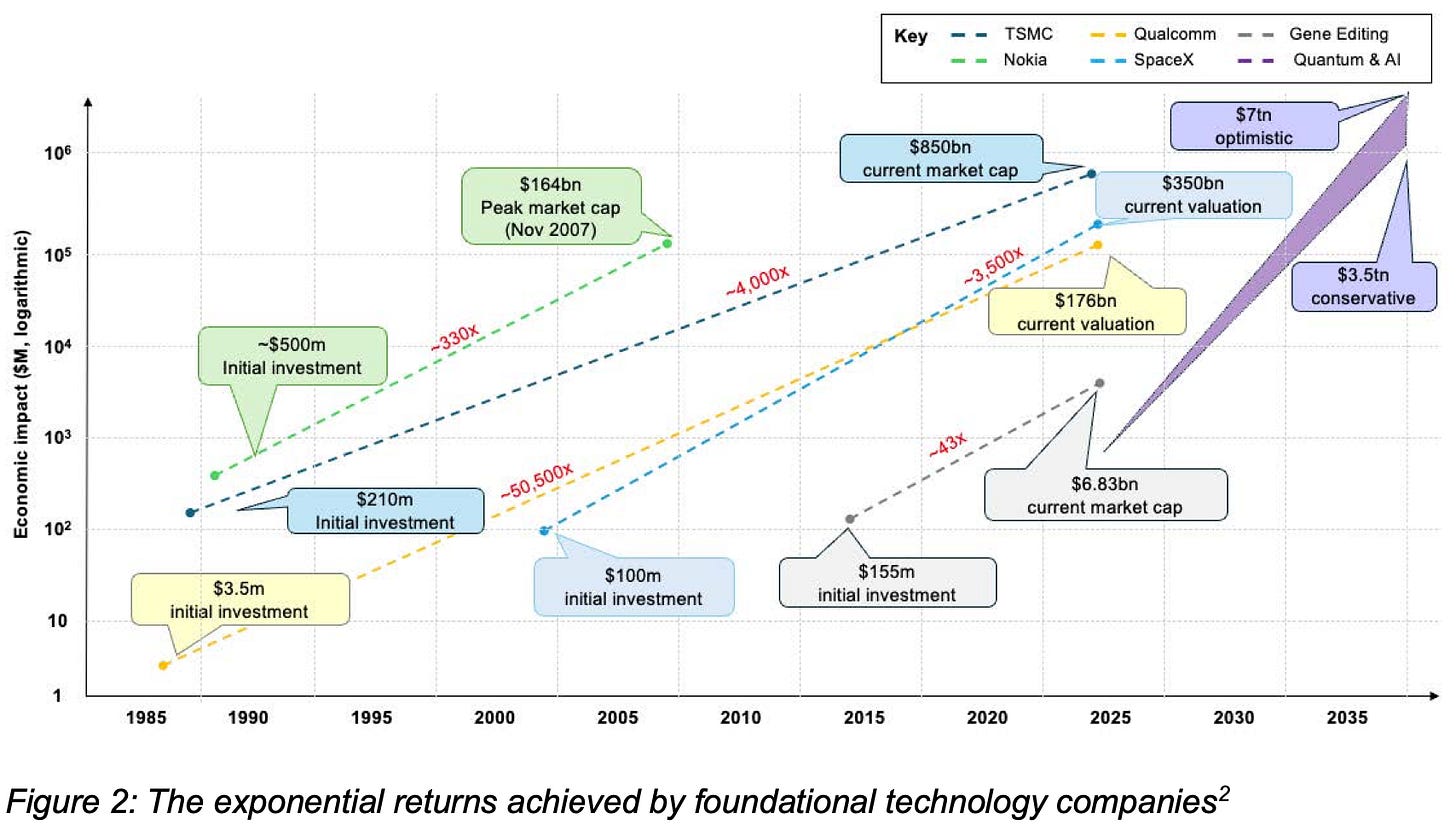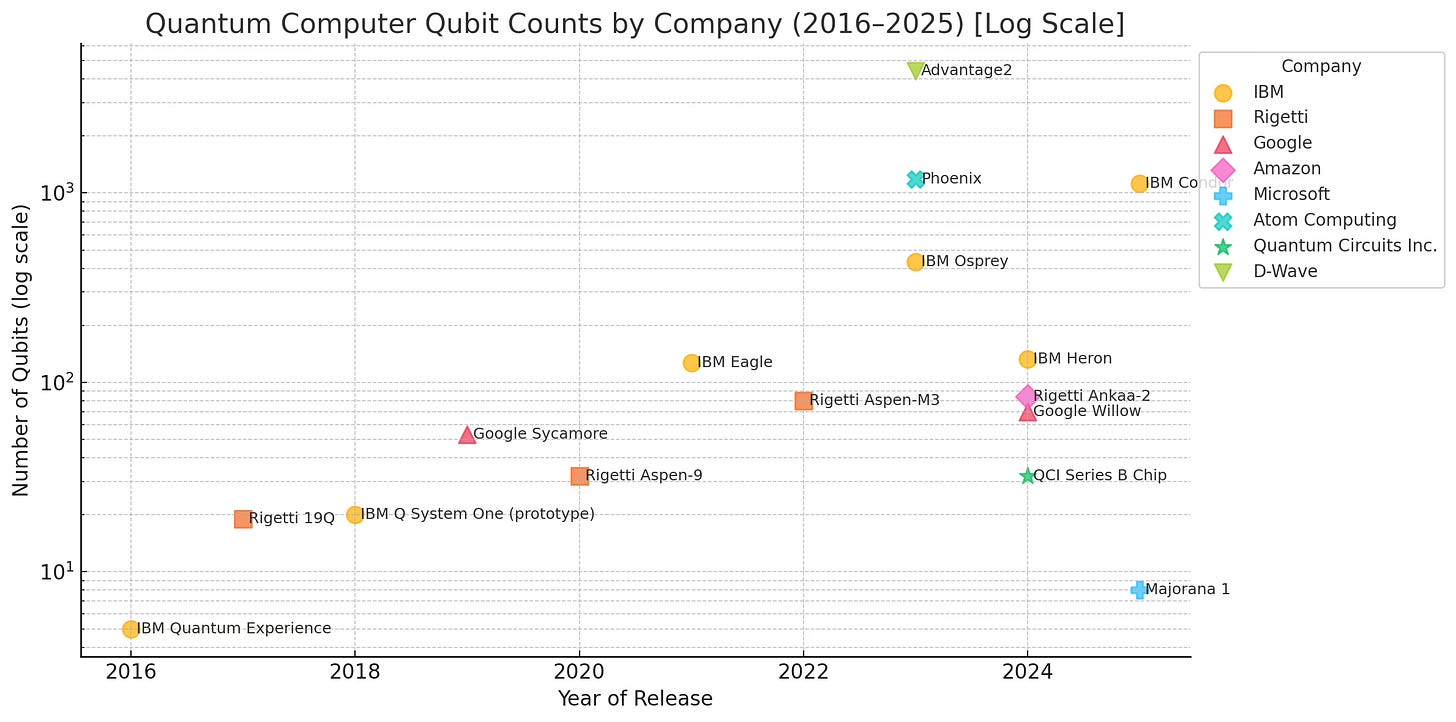Are You Quantum Ready?
If we are really witnessing the birth of a new computing paradigm, then we must prepare ourselves for it.
Welcome to the weekday free-edition of this newsletter that is a small idea, an actionable tip, or a short insight that takes less than 5 minutes to read. On Sundays, I write in-depth technical deep-dives on many aspects of semiconductors and chip design for paid subscribers of this publication. See all the benefits of upgrading your subscription tier!
If you would like to suggest a topic for this newsletter, please use this form.
A quick note: I am traveling this week to the 2025 International Microwave/RFIC Symposium held in San Francisco, CA from June 15th to 20th. Instead of a deep-dive post this Sunday, I plan to post from the front lines of the conference. If you’re attending too, it would be great to chat with you!
The Quantum Buzz
I feel like I’ve been orbiting the world of quantum computing for a while now — fascinated but without deep understanding.
Of late, there have been a number of announcements from Microsoft (Majorana), Google (Willow), IBM (Quantum System Two) and Amazon (Ocelot) about their breakthroughs in quantum computing. Like most people (I’m guessing), I have had a hard time understanding the implications of breakthroughs in quantum computing notably because it seems to be useful only for certain kinds of problems.
What kinds exactly? I’m unable to express clearly at the moment, but the news cycles didn’t seem to care — boasting that Google’s Willow could solve in under five minutes what the world’s best supercomputers would take 10^25 years to solve. This seemed to prove the existence of multiple universes because all the atoms in our universe could not explain the speed up in computation. Marc Andreessen explains it better.
From a layman’s view, here is my understanding: quantum computing particularly seems to be able to solve the unsolvable; it does not serve as a replacement for the classical computing technologies we use today, but a classical-quantum hybrid system is where practical utility probably lies.
Unesco declared 2025 as the International Year of Quantum Science and Technology to celebrate 100 years since the birth of quantum mechanics when Werner Heisenberg published the paper titled “On the quantum-theoretical reinterpretation of kinematic and mechanical relationships” in 1925. Some research firms have declared that the GenAI movement is losing steam, and that the time to get hitched to the quantum bandwagon is now. And, Microsoft is asking if we are “Quantum Ready.”
Quantum Exponentials
The graph below is from a Microsoft whitepaper about the state of the AI+Quantum industry which is projected to reached $3.5 trillion by 2035. When even foundational technologies like gene editing show only a 43x impact, it’s hard to believe projections that the AI + Quantum industry will grow by four orders of magnitude in the same period especially if quantum computing remains useful only for niche problems. The whitepaper argues that AI will accelerate progress in quantum, which will then boost computing power for AI data centers.
Here’s the problem though. There is still no evidence that quantum technologies are useful for AI training and inference. IBM’s article in IEEE Spectrum has a much more level take, stating that we first need to prove quantum utility — or the ability to perform commercially relevant tasks. Despite the media buzz, Google’s Willow chip could only perform a specific test called Random Circuit Sampling (RCS) several orders of magnitude faster than its classical counterpart. It is only a proof of concept with no practical utility yet.
The basic building block of quantum computing is the quantum bit, or qubit. Over the past decade, the number of qubits in new quantum systems has grown at an exponential pace. This rapid growth hints at the emergence of a new kind of “Moore’s Law” for quantum computers that might just be beginning to unfold.
Simply counting qubits can be misleading. Unlike transistors in classical computers, qubit numbers alone don’t directly reflect a quantum computer’s capabilities. Quantum systems are far more nuanced. As the number of qubits grows, so do the cumulative error rates in calculations. Controlling these errors and building fault-tolerant systems is one of the biggest challenges in quantum computing.
Riding the Quantum Train
Quantum computers are really just getting started and surely there will be a lot more exciting news. For example, IBM recently announced that they will build the world’s largest supercomputer codenamed IBM Starling by 2029, which will be capable of 20,000 times more operations than today’s quantum computers. In 2025, investments in quantum computing companies have risen by 128%, from $550 million in Q1 2024 to $1.2 billion in Q1 2025, with most of the funding going to startups like IonQ, QuEra Computing, Quantum Machines, D-wave computing and Alice & Bob.
If we are truly at the dawn of a new computing era, it’s worth gaining at least a basic understanding of quantum circuits and computing—something I plan to explore in this newsletter. But to cut through the media hype and grasp real progress, we need a solid understanding of the fundamentals.
I’ve now acquired a copy of Quantum Computing for Everyone by Chris Bernhardt for the sole purpose of quantum enlightenment. If you have other suggested readings, leave them in the comments below.
The views, thoughts, and opinions expressed in this newsletter are solely mine; they do not reflect the views or positions of my employer or any entities I am affiliated with. The content provided is for informational purposes only and does not constitute professional or investment advice.





https://youtu.be/e3fz3dqhN44?si=a9zUETt-eKZyQCyq
Found this video useful in explaining quantum computing
Quantum Computing for Dummies by Whurley is a good one!
Also, Quantum Pirates is a great resource to stay up to date on progress in quantum.